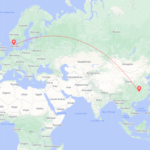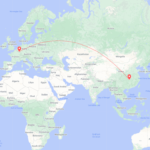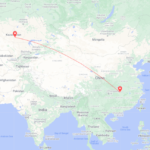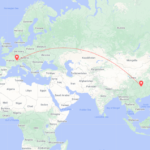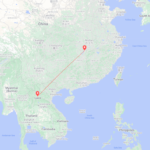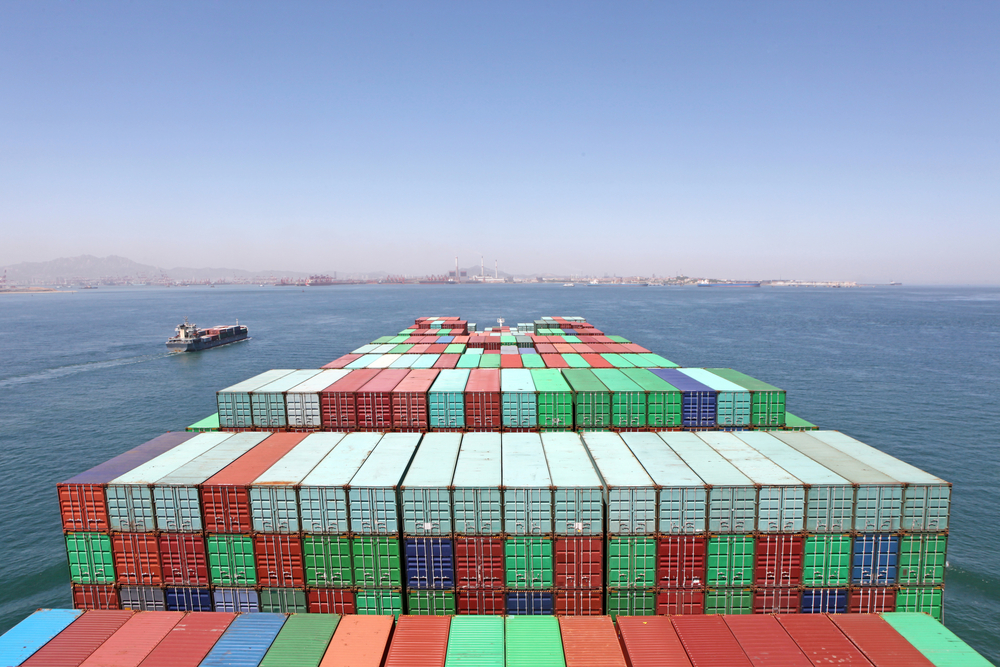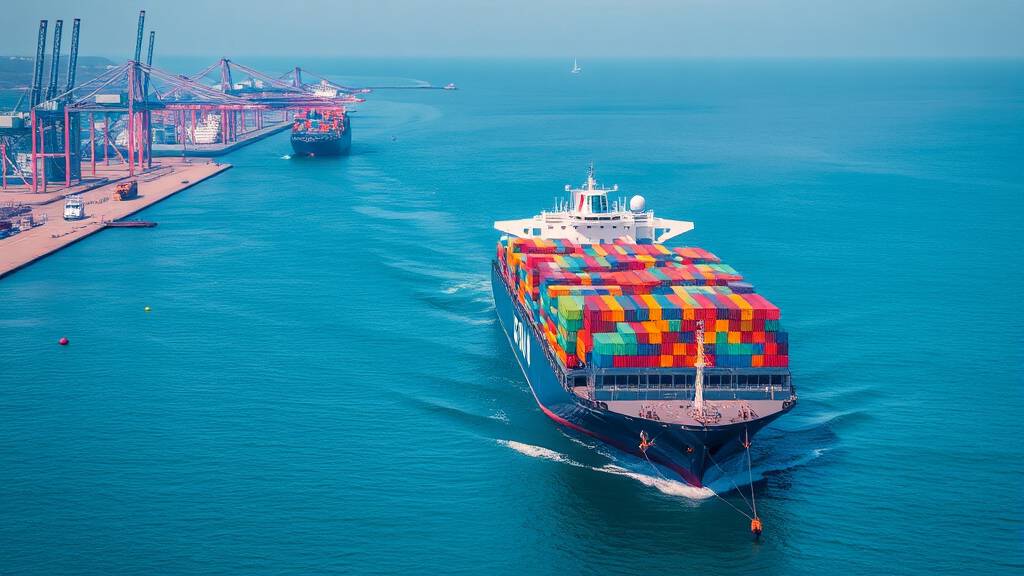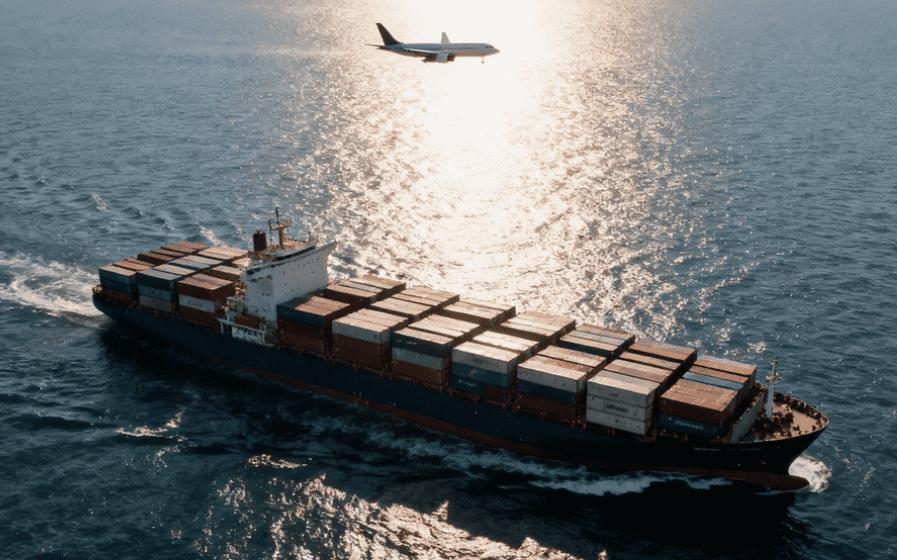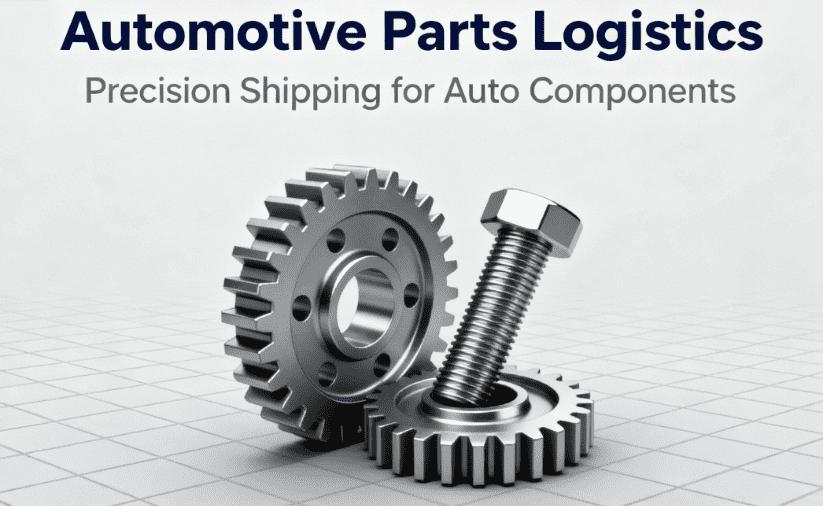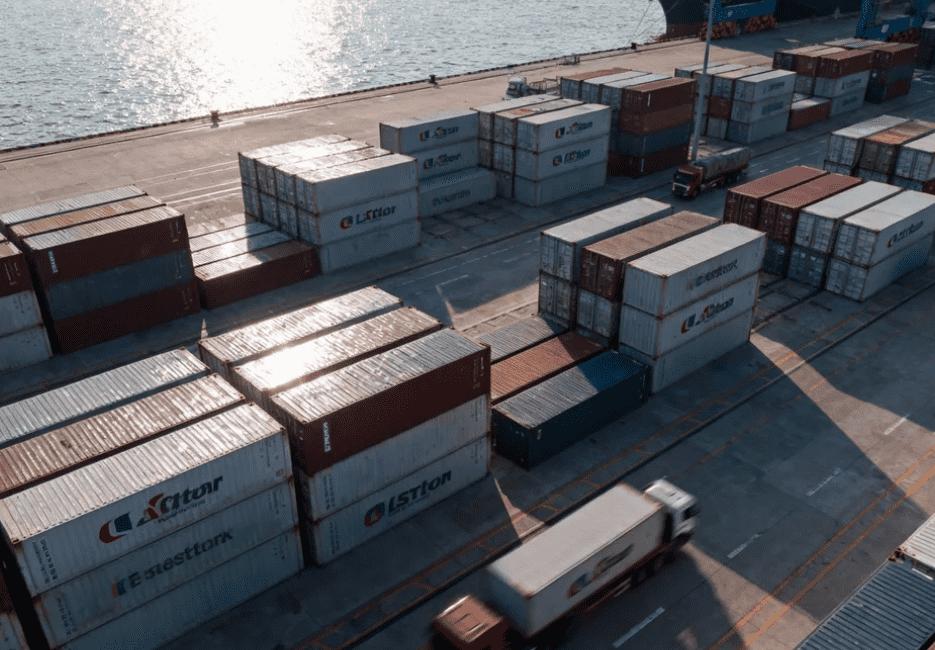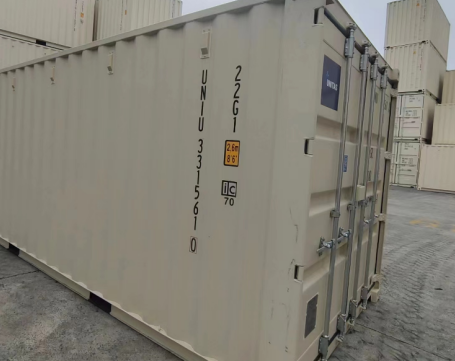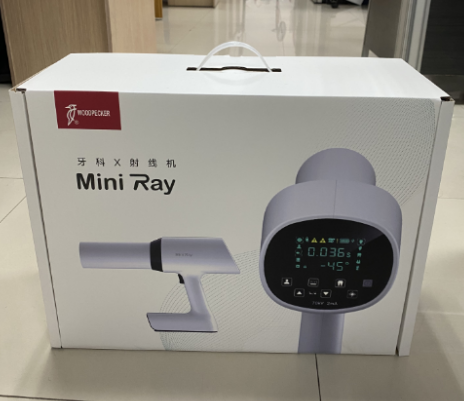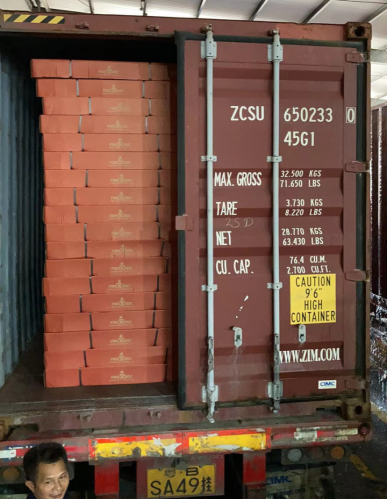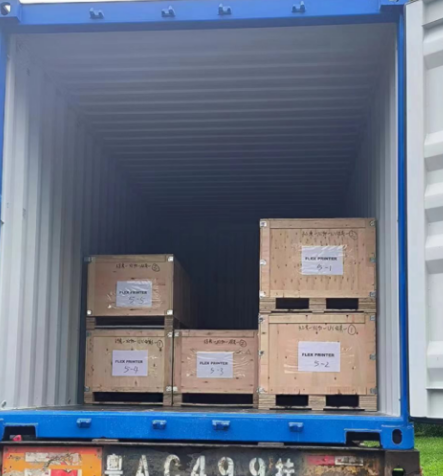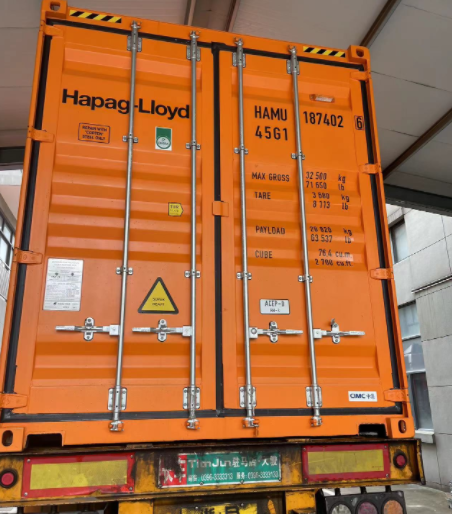Are you considering sea freight from China to Europe but unsure about the best routes, costs, and how to avoid delays?
In this comprehensive guide, we will delve into the essentials of sea freight, exploring key aspects such as major shipping ports, pricing factors, and effective strategies to minimize setbacks. By the end of this article, you’ll be well-equipped to navigate the complexities of international shipping and ensure a smooth transport process for your goods.

Understanding Sea Freight from China to Europe
What is Sea Freight and Why Choose It for Shipping?
Sea freight refers to the transportation of goods via cargo ships across oceans and large bodies of water. It is one of the most popular and cost-effective methods for shipping large quantities of goods internationally, particularly from China to Europe. The appeal of sea freight lies in its ability to handle substantial cargo volumes at lower rates compared to air freight, making it an ideal choice for global traders looking to minimize shipping costs.
Choosing sea freight for shipping has several advantages:
Cost-Efficiency: Sea freight is generally more economical for heavy and bulky items compared to air freight. This is especially important when considering the rising costs associated with air transport.
Capacity: Cargo ships can accommodate vast quantities of goods in various container types, including standard containers, refrigerated containers, and specialized equipment for oversized cargo.
Environmental Impact: Shipping by sea has a lower carbon footprint per ton-mile compared to other modes of transport. This can be a deciding factor for companies looking to enhance their sustainability practices.
Safety: With robust regulations and standards in place, shipping goods by sea often ensures a higher level of safety for your cargo, reducing the risk of damage during transit.
Key Benefits of Shipping by Sea
Shipping goods from China to Europe via sea freight offers a plethora of benefits that cater to the needs of global traders:
Reliability: Major shipping lines operate on fixed schedules, allowing for reliable transport times. This leads to predictable delivery dates, an essential factor for businesses with strict timelines.
Diverse Service Options: Freight forwarders, such as Dantful International Logistics, provide various services under sea freight, including door-to-door delivery, customs clearance, and insurance options, making it easy for traders to manage their logistics effectively.
Flexibility: With multiple routes and shipping options available, businesses can choose the most suitable service based on their specific needs, whether it’s speed, cost, or cargo type.
Specialized Handling: Many freight forwarders offer specialized services for different types of cargo, such as Amazon FBA, consolidated freight, and breakbulk freight, ensuring that specific needs are met.
Best Sea Freight Routes from China to Europe
Major Shipping Ports in China
China is home to several major shipping ports that serve as critical hubs for international trade. Here are some of the key ports:
| Port Name | Location | Key Features |
|---|---|---|
| Shanghai Port | Shanghai | The busiest port in the world, excellent infrastructure for container handling. |
| Shenzhen Port | Shenzhen | Major hub for electronics and consumer goods exports. |
| Ningbo Port | Ningbo | Close to manufacturing centers, efficient for heavy cargo. |
| Hong Kong Port | Hong Kong | Well-established international connections and customs facilities. |
| Qingdao Port | Qingdao | Significant for agricultural and industrial products. |
Popular Destination Ports in Europe
When shipping from China, several European ports serve as key destinations due to their strategic locations and capacity:
| Port Name | Location | Key Features |
|---|---|---|
| Rotterdam Port | Netherlands | Largest port in Europe, known for efficiency and excellent connectivity. |
| Hamburg Port | Germany | Major logistics hub with advanced infrastructure. |
| Antwerp Port | Belgium | Known for handling various cargo types, including bulk and containers. |
| Felixstowe Port | United Kingdom | The busiest container port in the UK, offers various shipping services. |
| Genoa Port | Italy | Key port for Mediterranean shipping routes. |
Comparison of Direct vs. Transshipment Routes
When planning sea freight from China to Europe, businesses must choose between direct routes and transshipment routes. Here’s a comparative overview:
| Route Type | Advantages | Disadvantages |
|---|---|---|
| Direct Routes | – Faster transit times<br>- Less risk of cargo damage<br>- Simpler logistics | – Higher costs due to limited shipping options |
| Transshipment Routes | – More cost-effective<br>- Greater flexibility in choosing shipping lines | – Longer transit times<br>- Increased risk of delays and handling issues |
Dantful International Logistics specializes in optimizing shipping routes to ensure that your goods are delivered efficiently and within budget. Choose us for a seamless ocean freight experience tailored to meet your specific needs.
Read More:
- Shipping From China To Netherlands
- Shipping From China To Spain
- Shipping From China To Germany
- Shipping From China To France
- Shipping From China to Italy
- Shipping From China To Poland
- Shipping From China to United Kingdom
Sea Freight Costs: Factors That Affect Pricing
Breakdown of Sea Freight Charges
When considering sea freight from China to Europe, it is essential to understand the various charges involved in the shipping process. Several key components make up the overall cost you will encounter:
| Charge Type | Description |
|---|---|
| Freight Charge | The base cost for transporting goods across the ocean, determined by distance, route, and shipping company. |
| Bunker Adjustment Factor (BAF) | A surcharge levied to account for fluctuations in fuel prices, which can vary significantly. |
| Terminal Handling Charges (THC) | Fees for loading and unloading containers at ports, which may differ between ports of origin and destination. |
| Documentation Fees | Charges for necessary paperwork, including bills of lading and customs documents. |
| Insurance Costs | Optional but recommended, this covers your cargo against potential damage or loss during transit. |
| Customs Clearance Fees | Costs associated with clearing your goods through customs at the destination port. |
| Port Fees | Charges imposed by the port authority for the use of port facilities. |
Understanding these charges can help you make an informed decision and plan your budget effectively. Working with a reputable freight forwarder like Dantful International Logistics can simplify this process, as they provide transparent pricing and can assist in navigating additional costs.
Impact of Container Size and Type on Costs
The size and type of container you choose for your shipment can significantly influence your ocean freight costs. Here are some considerations:
| Container Type | Standard Size | Cost Implications |
|---|---|---|
| 20-foot Standard Container | 20 ft (6.1 m) | Generally lower cost; suitable for smaller shipments. |
| 40-foot Standard Container | 40 ft (12.2 m) | Cost-effective for larger shipments; may provide better per-unit pricing. |
| High Cube Containers | 40 ft (12.2 m) | Offers extra height; ideal for bulky goods but may incur higher costs. |
| Reefer Containers | Varies | Specialized for temperature-sensitive goods; typically incurs higher fees. |
| Flat Rack and Open Top | Varies | Suitable for oversized or irregularly shaped cargo; pricing can vary widely. |
Choosing the right container size and type not only affects the freight rate but also impacts the overall efficiency of your logistics. If you are unsure about what container best suits your needs, Dantful International Logistics can provide tailored advice based on your cargo specifications.
Seasonal Variations in Freight Pricing
Freight pricing is often subject to seasonal fluctuations due to various factors including demand, weather conditions, and peak shipping times. Here are some notable trends:
- Peak Seasons: Typically, demand spikes during the holiday season (November to January) and Chinese New Year. During these periods, prices can increase due to high demand for cargo space.
- Off-Peak Seasons: Rates may decrease during slower months, presenting opportunities for cost savings. However, it is essential to ensure that shipping times align with your supply chain needs.
- Weather Conditions: Adverse weather events can disrupt shipping routes and schedules, potentially increasing costs due to delays or rerouting.
To avoid unexpected costs, it’s crucial to monitor market trends and plan your shipments accordingly. Engaging with a freight forwarder like Dantful International Logistics will keep you informed about pricing changes and help you navigate these seasonal variations effectively.
Tips for Avoiding Delays in Sea Freight
Importance of Accurate Documentation
Accurate documentation is pivotal in ensuring a smooth shipping process. Any discrepancies in paperwork can lead to significant delays at customs or during transit. Ensure that you have the following accurate documents ready:
- Bill of Lading: Acts as a contract between the shipper and carrier.
- Commercial Invoice: Details the transaction between the buyer and seller.
- Packing List: Provides a detailed list of the items contained within the shipment.
- Certificate of Origin: Verifies the origin of the goods to comply with import regulations.
By working closely with your freight forwarder, such as Dantful International Logistics, you can ensure all documentation is correctly prepared, minimizing the risk of delays.
Best Practices for Packaging and Labeling
Proper packaging and labeling play a critical role in preventing delays during shipping. Follow these guidelines:
- Use Durable Materials: Ensure that your packaging can withstand the rigors of sea travel.
- Label Clearly: Include all necessary information such as destination address, handling instructions, and contact details.
- Follow International Standards: Ensure compliance with regulations regarding packaging materials and methods, especially for hazardous materials.
A well-packaged shipment facilitates smooth handling at ports and customs, thereby reducing the risk of delays. Consult with Dantful International Logistics for expert advice on packaging practices tailored to your cargo.
Understanding Customs Procedures and Compliance
Navigating customs can be one of the most complex aspects of international shipping. To avoid delays, familiarize yourself with the following:
- Customs Regulations: Each country has its own import regulations that must be adhered to, including tariffs, duties, and prohibited items.
- Tariff Classification: Correctly classify your goods to ensure proper duty assessment. Misclassification can result in delays and fines.
- Pre-Clearance Options: Some countries offer pre-clearance programs that allow customs clearance before the cargo arrives. This can significantly reduce waiting times.
Staying informed and complying with customs procedures is essential for the timely delivery of your goods. Partnering with a knowledgeable freight forwarder like Dantful International Logistics can provide you with the expertise needed to navigate these complexities effectively.
Managing Your Sea Freight: Working with Freight Forwarders
Choosing the Right Freight Forwarder for Your Needs
Selecting a suitable freight forwarder is crucial for ensuring a smooth and efficient shipping process from China to Europe. A reliable freight forwarder can help navigate the complexities of sea freight, provide cost-effective solutions, and ensure compliance with international shipping regulations. When choosing a freight forwarder, consider the following factors:
Experience and Reputation: Look for a freight forwarder with substantial experience in the industry and a strong reputation for reliability. Check online reviews and ask for references to gauge their performance.
Service Offerings: Ensure that your chosen freight forwarder provides comprehensive services such as ocean freight, customs clearance, and door-to-door delivery. Dantful International Logistics, for example, is a one-stop solution that offers a range of services tailored to meet diverse shipping needs.
Network and Relationships: A freight forwarder with a robust network of carriers and agents can provide you with better rates and more flexible shipping options. This is particularly important when considering direct vs. transshipment routes to optimize transit times.
Technology Utilization: Look for a freight forwarder that employs advanced technology for tracking shipments and managing logistics. This can significantly enhance visibility and efficiency in the shipping process.
The Role of Technology in Sea Freight Management
In the modern logistics landscape, technology plays a pivotal role in managing sea freight. Here are some ways technology is transforming freight forwarding:
Real-time Tracking: Advanced tracking systems allow shippers to monitor their cargo at every stage of the journey. This transparency not only improves communication but also helps in timely decision-making.
Data Analytics: Freight forwarders can leverage data analytics to optimize shipping routes and predict potential delays. By analyzing historical data, forwarders can make informed decisions to mitigate risks and enhance efficiency.
Automated Documentation: Technology can streamline the documentation process, reducing the chances of errors that can lead to delays. Automated systems can ensure that all necessary documents are prepared and submitted promptly.
Customer Portals: Many freight forwarders offer online portals where customers can check the status of their shipments, access documents, and communicate directly, making the process more user-friendly and efficient.
Effective Communication with Your Freight Forwarder
Clear communication is essential when working with a freight forwarder. Here are some tips for establishing effective communication:
Set Expectations: Clearly outline your shipping requirements and timelines. Discuss all aspects of the shipment, including packaging, labeling, and any special handling instructions.
Regular Updates: Request regular updates on the status of your shipment. A proactive freight forwarder will keep you informed about any changes in schedules, potential delays, or issues that may arise.
Feedback Loop: Provide feedback on the services received, both positive and negative. This will help your freight forwarder improve their services and better cater to your needs in the future.
Preparing for Your Shipment: Essential Checklists
Pre-shipment Checklist for Sea Freight
To ensure a smooth sea freight process, use the following pre-shipment checklist:
Cargo Documentation: Gather and prepare all necessary documents including commercial invoices, packing lists, and bills of lading.
Packing Requirements: Ensure that your cargo is packed according to international standards to prevent damage during transit. Use appropriate materials and ensure that packages are well-labeled.
Customs Compliance: Check all customs regulations to ensure compliance. This includes verifying duties, taxes, and any specific requirements for the destination country.
Insurance: Consider purchasing marine cargo insurance to protect your shipment against loss or damage during transit. You can explore various insurance services offered by freight forwarders.
Freight Forwarder Confirmation: Confirm all details with your freight forwarder, including shipping routes, costs, and timelines.
Post-shipment Considerations for Smooth Delivery
After your cargo has been shipped, keep the following considerations in mind for a successful delivery:
Track Your Shipment: Utilize your freight forwarder’s tracking system to monitor your cargo’s progress and estimated arrival time.
Prepare for Customs Clearance: Ensure that all necessary documentation is ready for customs clearance upon arrival in Europe. This will help avoid any delays.
Plan for Delivery Logistics: Coordinate with your freight forwarder regarding the delivery of your goods. Confirm all arrangements for the final leg of the journey, whether it’s through door-to-door delivery or picking up from a port.
Inspect Goods Upon Arrival: Once your cargo arrives, inspect the shipment for any damages or discrepancies. Report any issues immediately to your freight forwarder.
Conclusion
Navigating sea freight from China to Europe can be a complex process, but with the right strategies and support from a reputable freight forwarder like Dantful International Logistics, you can streamline your shipping operations. By understanding the benefits of working with freight forwarders, leveraging technology for better management, and adhering to essential checklists, you can enhance your shipping experience and avoid common pitfalls associated with international trade.

Young Chiu is a seasoned logistics expert with over 15 years of experience in international freight forwarding and supply chain management. As CEO of Dantful International Logistics, Young is dedicated to providing valuable insights and practical advice to businesses navigating the complexities of global shipping.


